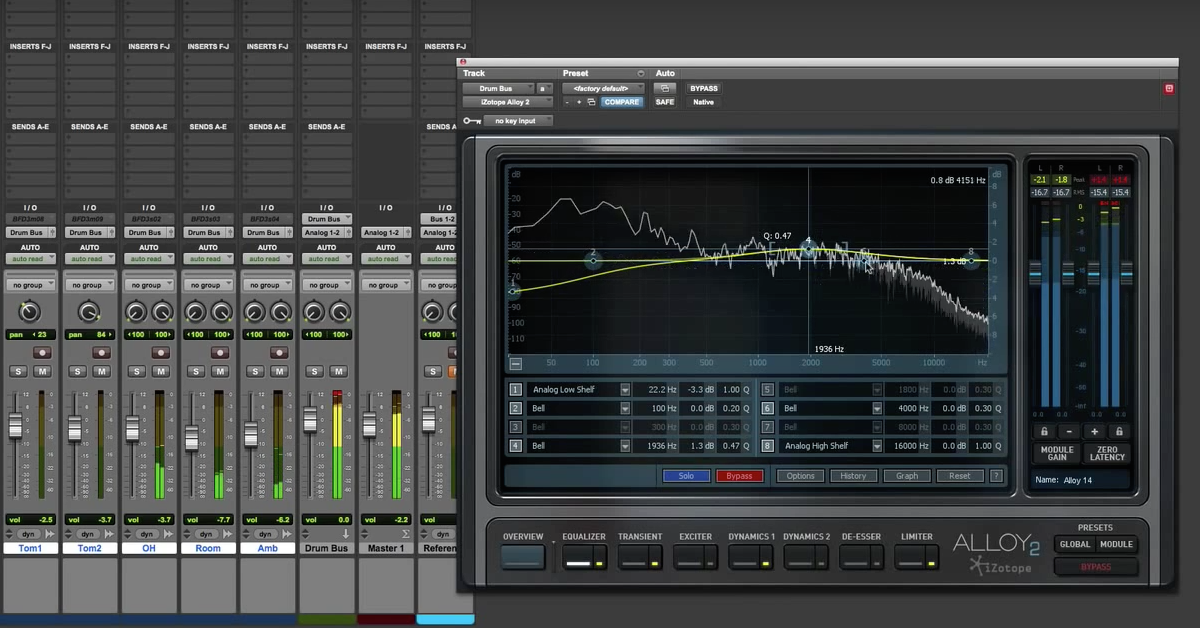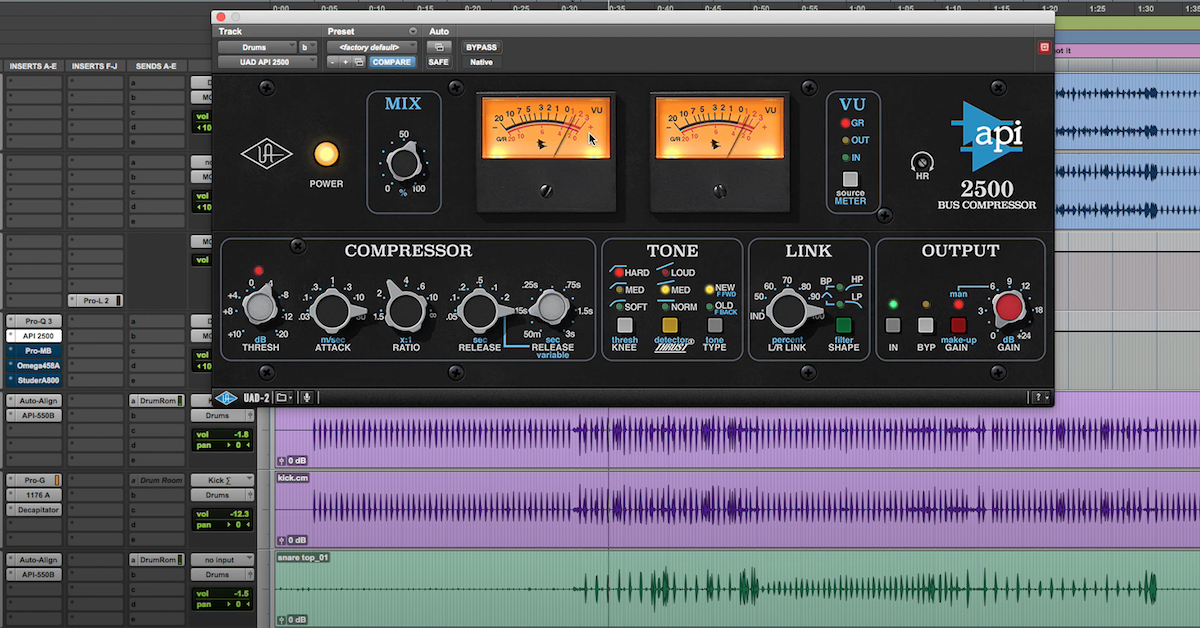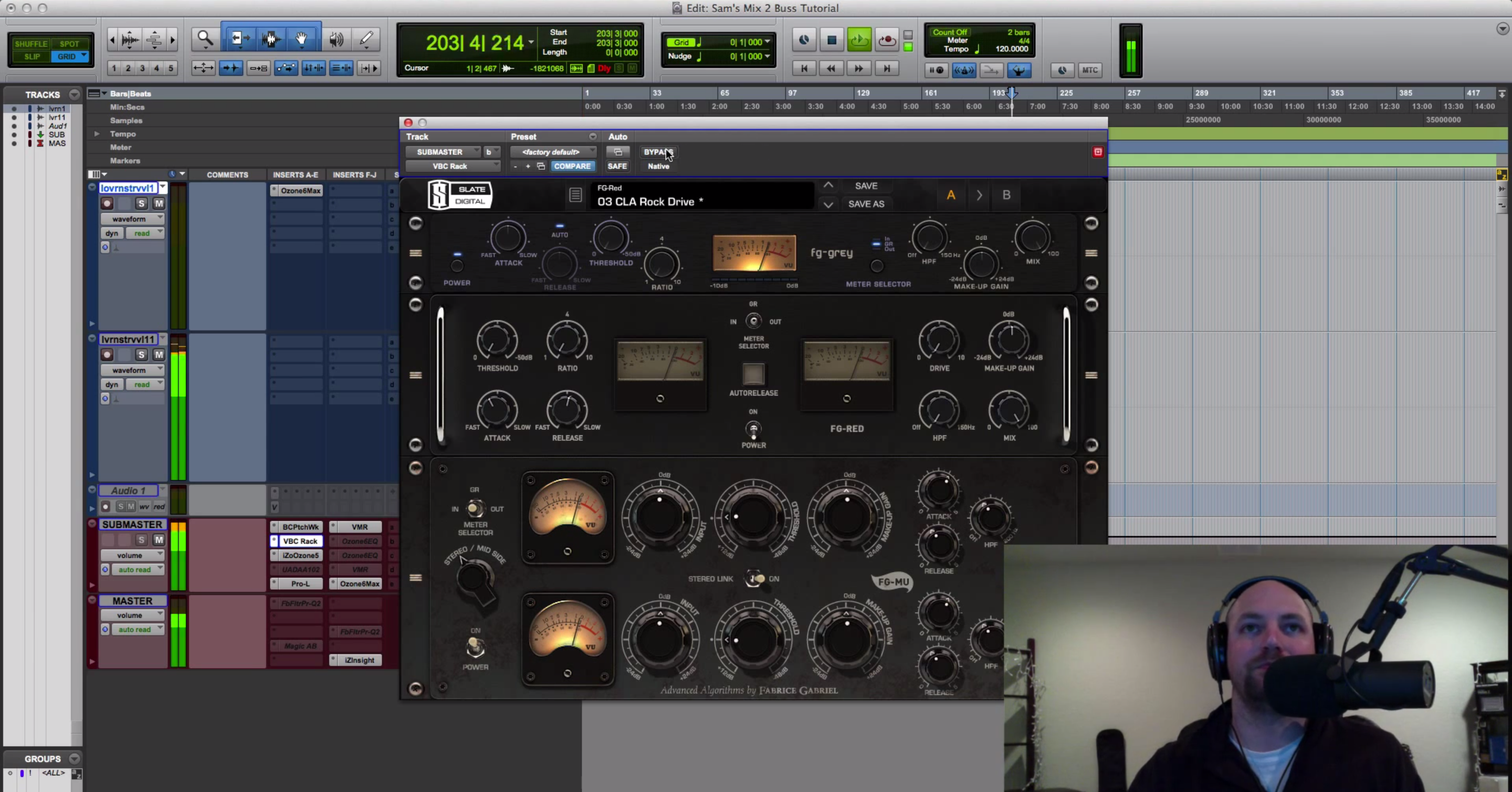22 Favorite Mix Buss Plugins (+ Mix Tips)
Article Content
Ever listen to your printed mixes and wonder why they don’t sound closer to your favorite records? If you’re not correctly applying processing to your mix buss (otherwise known as a 2-buss, master buss, stereo out, and more) you’re likely missing out on the punch, clarity, warmth, and overall volume found in professionally mixed and mastered releases. I want to stress that processing your stereo buss isn’t the same as mastering, but applying equalization, compression and saturation can afford you some of the qualities of commercially mastered music. It’s also essential to understand that your music might be better off by not applying anything to the mix buss if the processing is applied incorrectly, as heavy-handedness when using these tools can lead to lifeless, thin and harsh-sounding mixes.
Whenever I’m mixing, I don’t shy away from dressing up the mix buss with several of my favorite plugins, as my goal is always to create a deliverable that sounds as close to mastered as possible. I have templates and track presets (in both Logic and Pro Tools) that allow me to quickly access mix buss signal chains, which I will usually mix into when I start a mix. Other times, I’ll begin with little to no processing on the mix buss other than a safety limiter, which I’ll discuss later on.
Beneath is a roundup of some my favorite mix buss plugins and how I use them. Important to note is that these are not listed in the exact order I employ them on my mix buss, aside from the limiter, which I ways place last. Toward the end of the article, I’ve placed some audio examples of mixes with and without mix buss processing.
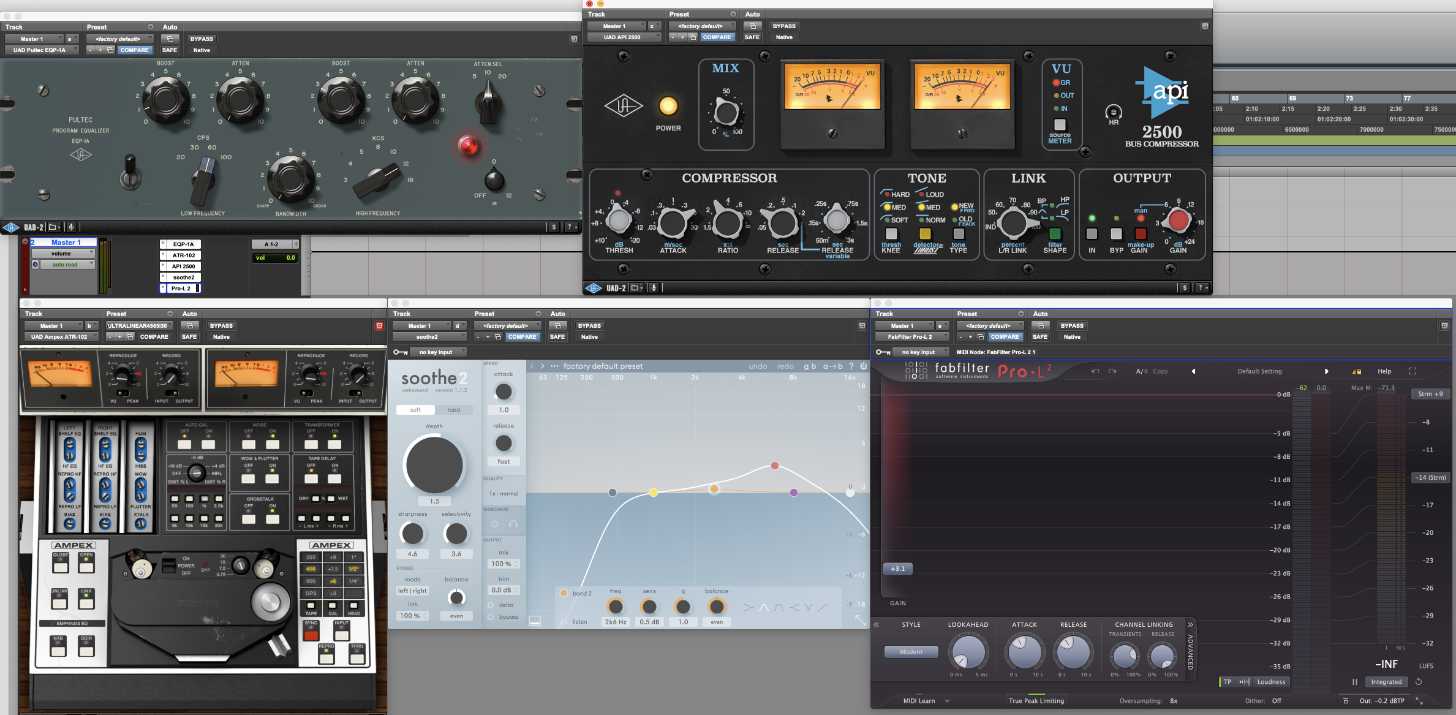
Ian’s mix buss plugins
1. Your Pultec EQP-1A Emulation of Choice
This famed tube equalizer has staying power. Designed in Teaneck, New Jersey in the 1950s, the hardware EQP-1A has been used for over a half century to sweeten program material in studios the world over. Plugin versions are available from Universal Audio, Waves, Softube, and you’ll even find a serviceable version as a stock Logic plugin, among others.
Mix Tip
Despite having the unique (and understandably confusing) feature of being able to boost and cut at the same frequency, the EQP-1A is pretty simple to use for mix buss duties. The thing to understand is that the EQ curves of the boost and attenuate knobs are slightly different. I love using the Pultec for adding high frequency content to the entire mix (usually 12 kHz or 16 kHz) and occasionally for thickening the low end (usually at 60 Hz or 100 Hz).

2. Your Favorite Tape Emulation Plugin
Analog tape has been essential technology in the evolution of music recording. While digital technology is far more cost effective and efficient, the sonic character of tape is undeniable. Fortunately for the many of us who have migrated to using DAWs, there are numerous plugins that offer the punch, power and mojo of analog tape. A few of my favorites include:
Baby Audio TAIP
This AI-powered tape emulator features a super clean GUI, but don’t be fooled. TAIP can offer all the glorious, gritty warmth of analog tape when pushed hard.
Mix Tip
Here in early 2022, I’m not certain as to why every single plugin doesn’t feature a dry/wet blend feature, otherwise known as a “mix” control. But I don’t build plugins, I just use them (and write about them). Fortunately, TAIP does feature a mix control in the form of a slider located in the center of the GUI. I’ll dial in a more aggressive sound using TAIP, and then bring down the mix level to taste. This preserves the original signal, but with added attitude, harmonics and a boost in perceived loudness.
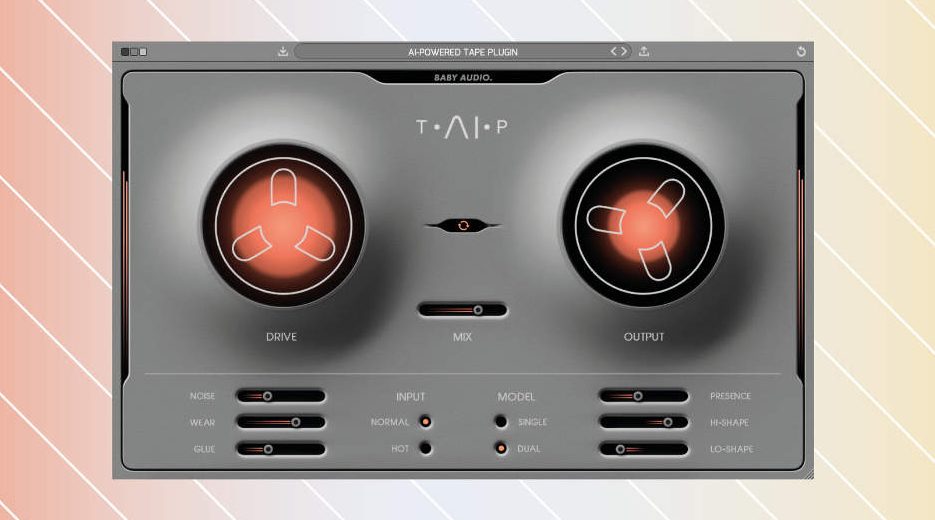
Universal Audio Studer A800 and Ampex ATR-102
These are perhaps the most true-to-life tape emulation plugins, both sonically and functionally. The Studer A800, which works fantastically on individual tracks and busses, sees a lot of use when my overall mix is lacking in character and cohesion. The more subtle Ampex ATR-102, on the other hand, adds an unparalleled clarity and detail to program material.
Mix Tip
Higher inches per second (IPS) means more high frequency content. Each of these plugins allow the user to choose a variety of tape speeds. Both offer 30, 15 and 7.5 IPS, and there’s an additional 3.75 IPS setting on the Ampex. For a cleaner, more hi-fi sound, choose higher values. If you want to dull out your mixes, go with a lower IPS. Be warned, the 7.5 and 3.75 settings are noticeably darker, and they may be better used as a “special effect” rather than strapped across your entire mix buss for the duration of the song.
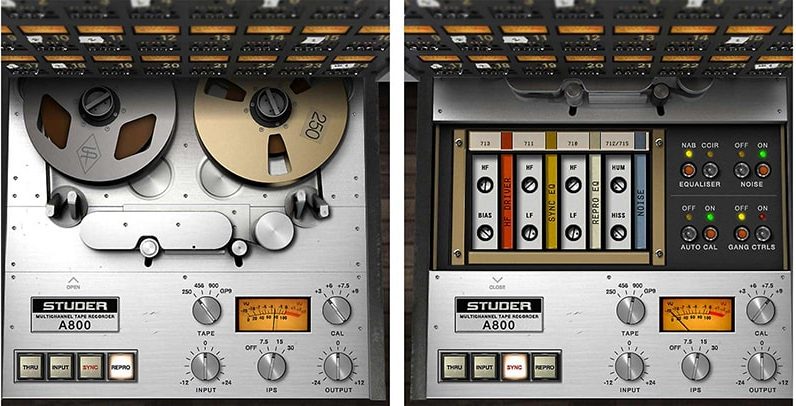
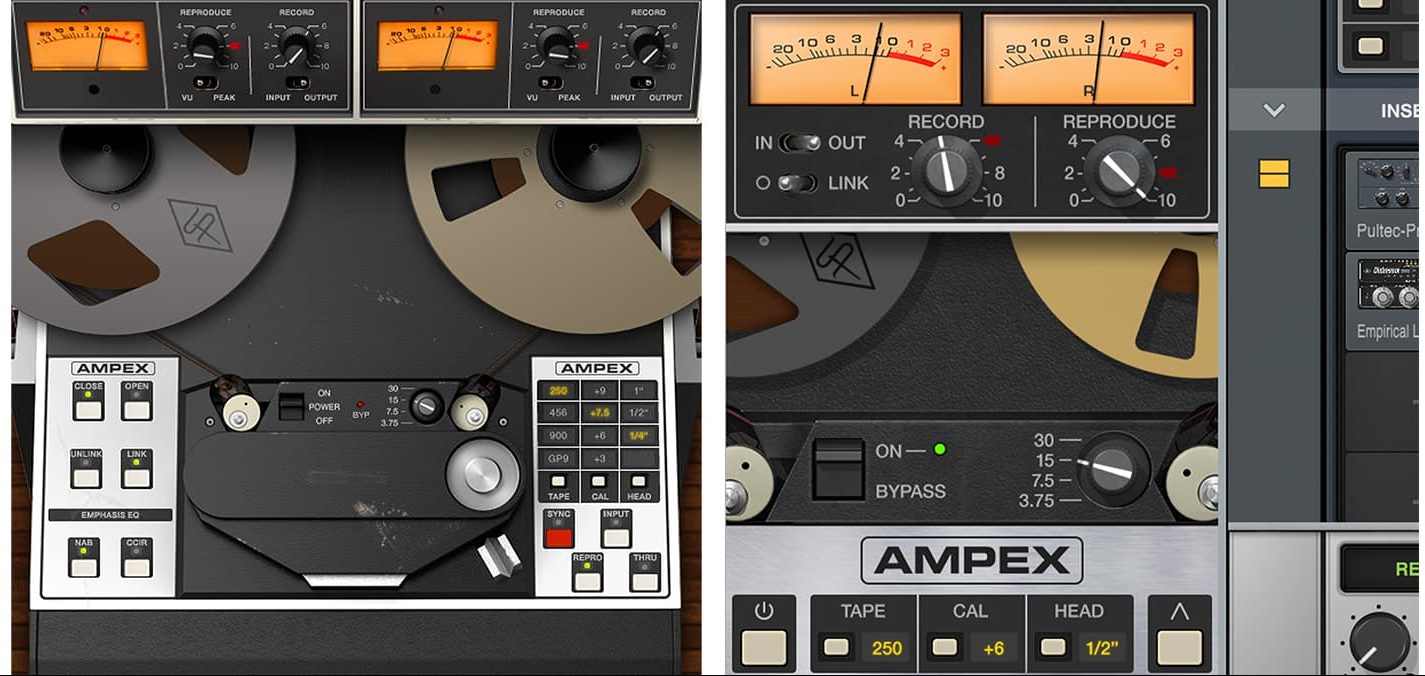
Slate Digital Virtual Tape Machines (VTM)
VTM is one of those plugins that sometimes just works better than any other tape emulator, and I can’t for the life of me describe why it’s superior in those moments. It adds a very specific character that I wouldn’t consider transparent, but it’s sometimes exactly what a mix needs.
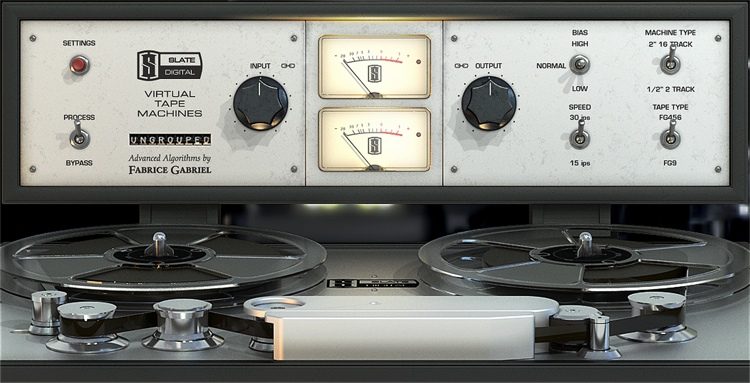
Mix Tip
While VTM seems the most simplistic upon loading, you have the ability to go “under the hood” and tweak parameters such as noise reduction, wow & flutter, bass alignment and more via the submenus. Make sure to access these and adjust accordingly if your mix needs extra attention to these details.
While these aforementioned plugins are the ones that see the most use on my mix busses, there are several other powerful tape emulators available, including two from Waves, Softube, IK Multimedia and more.
3. A “Glue” Compressor
Compression on the mix buss can do wonders. It can offer a boost in perceived (and actual) loudness, it can shape the tonality of the material, and it can create a sense of cohesion, otherwise known as “glue.” The SSL master bus compressor is famous for subtly smushing entire mixes together so that they feel more forceful and unified. Faithful emulations of this unit are available from companies including Waves, Universal Audio, Cytomic and others. A general mix tip that applies to most buss compression is to use a slower attack time as to not squeeze the life out of transients, and shoot for more conservative levels of gain reduction (think 1-3 dB at the most) so that the low end and overall integrity of the mix aren’t compromised.
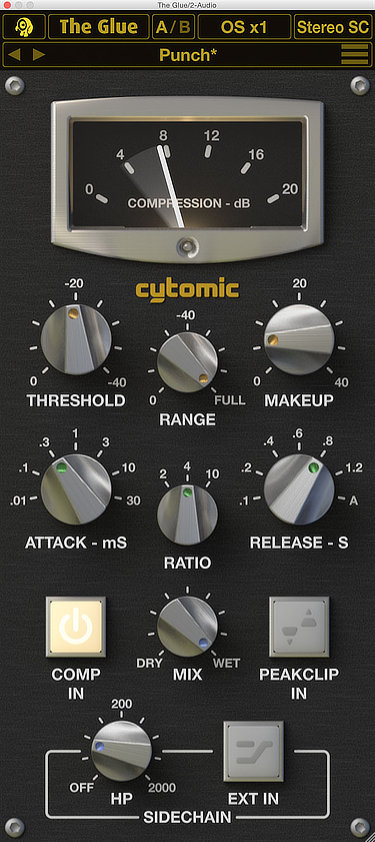
Some of my other favorite buss compressors include:
Universal Audio API 2500
This emulation of the famed hardware unit sees use all over my mixes: on individual tracks including kick & snare drum, subgroups, and yes, across my entire mix buss. If I want to go extremely subtle, the 2500 offers gentle, transparent gain reduction at lower values. However, if I really want to add “thwack” and an up-front quality to my mix, the 2500 can handle that too.
Mix Tip
Use the thrust feature for an unmatched punch. Adopted from their line of consoles, the API 2500’s thrust feature places a filter before the RMS detector, subsequently evening out high and low frequencies so neither triggers the compressor more than the other. The resulting sound is both dynamically tight and incredibly punchy.
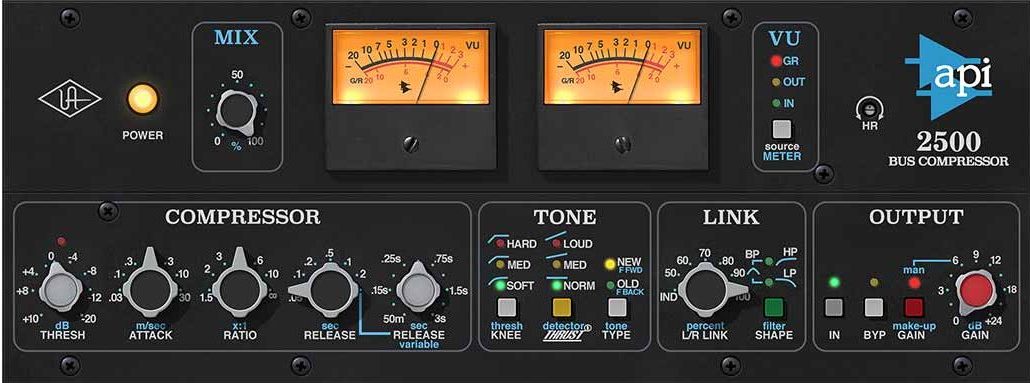
Plugin Alliance Lindell Audio 254E
While initially released by Neve for broadcast, the 2254 limiter became a go-to unit for producers of rock and roll due to its colorful sound and ability to make individual tracks (like drums) leap out of the speakers. Available now as a plugin from Lindell, the 254E features a dry/wet mix knob, a high-pass sidechain feature to help in preserving your low end and separate limiter & compressor sections so that you can truly sculpt the dynamics of your entire mix.
Mix Tip
Want subtle? Look elsewhere. Don’t get me wrong, the dry/wet blend knob will certainly allow you to dial back the compression effect, but this character-rich unit is best applied to material that is lacking in flavor. If I’m ever working on a mix that feels a bit flat and lifeless, the 254E is one of my go-to weapons.
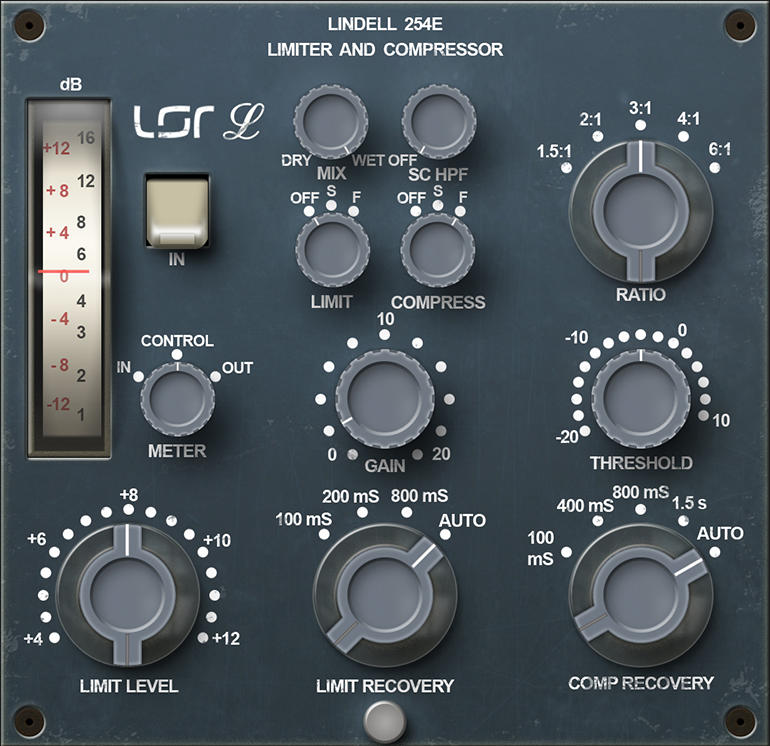
4. Something to Dynamically React to Unwanted Harshness and Other Frequency-Based Issues
This is a class of plugins that simply didn’t exist a decade ago, but several software companies have developed revolutionary tools that react in real time to your mix and help ensure that the frequency spectrum is balanced throughout the duration of your production.
Baby Audio Smooth Operator
The Smooth Operator is an intelligent signal balancer that relies on resonance suppression, spectral compression and equalization to minimize harshness and provide a clear, full, balanced tonal result. It’s an incredibly simple plugin to use — only relying on dragging a few controls up, down, left or right to preserve what you love about your material and minimize what you don’t. Users can increase how surgical the plugin gets, solo individual bands and even apply sidechain processing. If you’ve got trustworthy monitoring and you know what you’re trying to accomplish, Smooth Operator can help you balance the tonal spectrum of your program material very quickly. As with all plugins from Baby Audio, the GUI is beautiful, easy to use and provides helpful visual feedback.
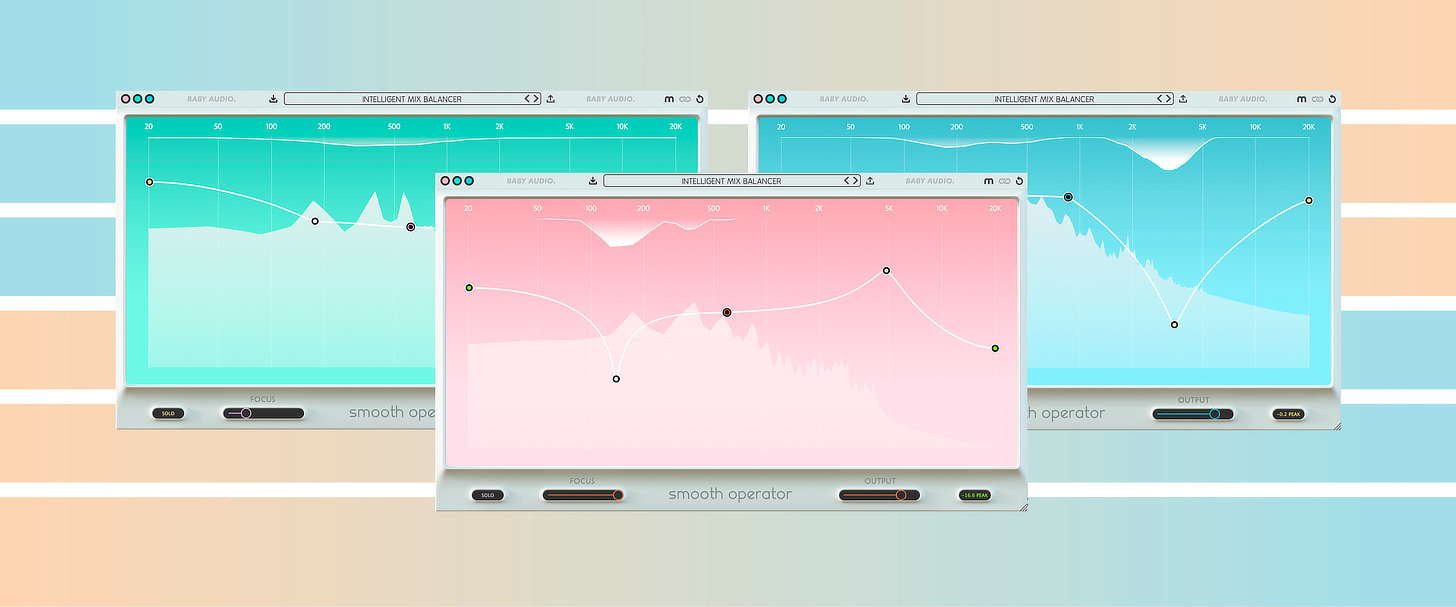
Mix Tip
Experiment with where in the signal chain this plugin is inserted, and try it on multiple sources. While this software is included in a roundup of my favorite mix buss plugins, I often use Smooth Operator on individual vocal & guitar tracks, drum & vocal subgroups and pretty much wherever I want to smartly and transparently minimize an overwhelming amount of information in any frequency range. Occasionally, I’ll place this plugin at the very beginning of my mix buss signal chain, tidying up my signal before any other additional processing. Other times, I’ve had better luck placing Smooth Operator near the end of the chain, directly before final limiting. The results you can achieve with this software is very program dependent, so definitely experiment with how you apply it.
Oeksound Soothe 2
In recent years, Soothe and it’s successor Soothe 2 have been two of the most game-changing plugins for mixing. The OG was one of the first popular dynamic resonance suppressors, and for good reasons — pristine sound quality, tons of useful features and an easy-on-the-eyes user interface. I use it on individual tracks (especially vocals), subgroups and on the mix buss. Anything that has too much information in certain areas of the frequency spectrum can stand to be soothed.
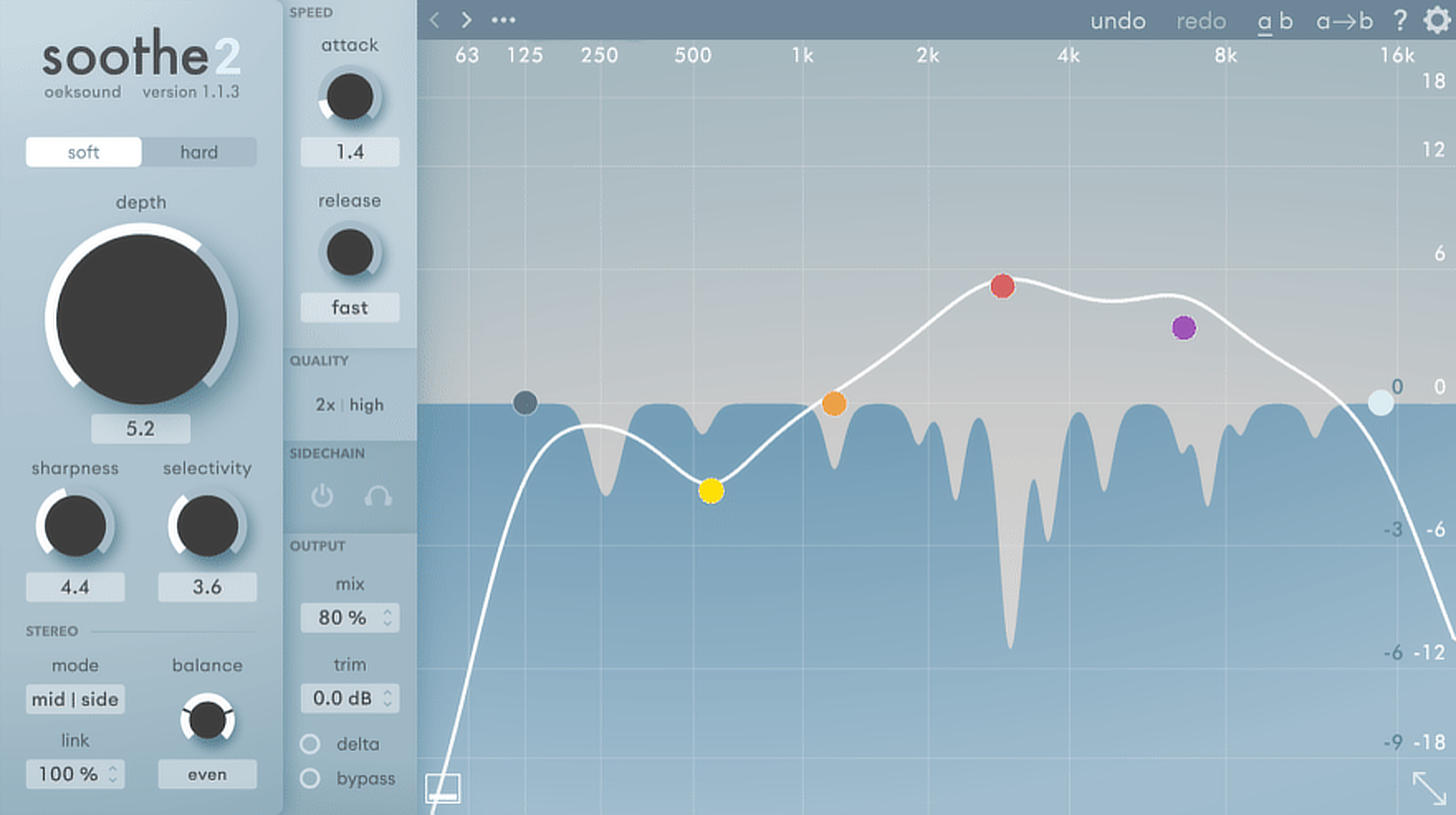
Mix Tip
As I mentioned, I’ll use soothe for a variety of applications, and I suggest you do the same. By applying it to overly bright vocals, harsh cymbals and brittle guitars, you’re solving problems before they reach the mix buss. If the heavy lifting is taken care of early on, the instance of soothe placed on your mix buss has much less work to do and will therefore sound more transparent.
5. A Safety Limiter
Limiters are used to prevent the amplitude from going over a certain level, which we refer to as a “ceiling.” A helpful utility, we can also utilize limiters for sonic dividends. Since the level never passes a certain point, by feeding more amplitude into a limiter, we can achieve a louder overall mix. Beware though, too much limiting can completely squash transients and ruin your low end. There are many great limiters on the market, and some of my favorite include the FabFilter Pro L 2, the Brainworx bx_limiter True Peak, the Sonnox Oxford Limiter and the Massey L2007.
Mix Tip
For loudness duties, I sometimes use multiple limiters in series. For example, rather than having one limiter apply 3 dB of gain reduction, I’ll have two each handling 1.5 dB. In my experience, the result is more transparent-sounding when you ask less of your limiters.
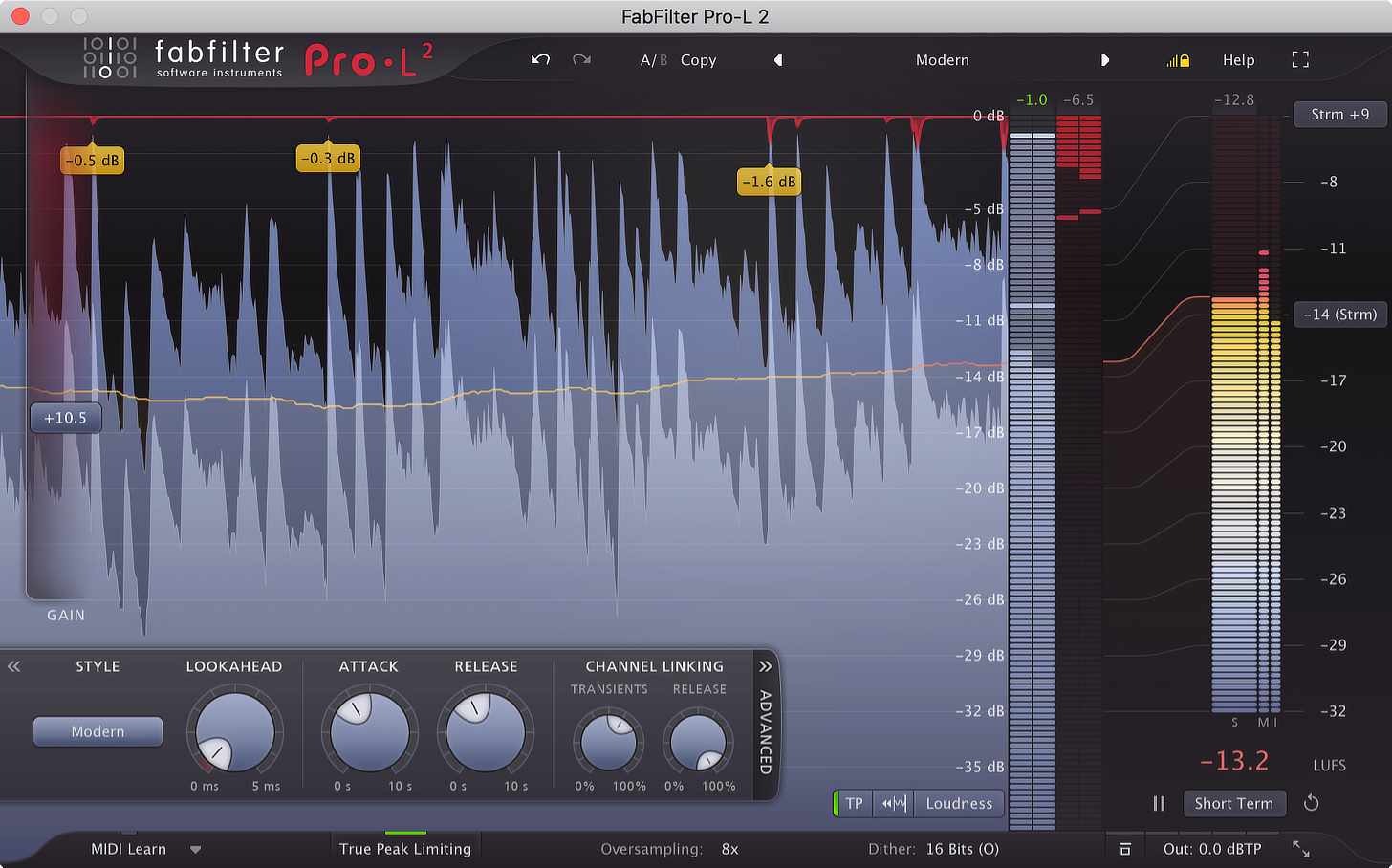
Audio Examples:
^ The Next Great American Novelist – “Wicked” without Mix Buss Plugins. ^
^ The Next Great American Novelist – “Wicked” with Mix Buss Plugins. ^
^ SIGNALS – “Take Care” without Mix Buss Plugins ^
^ SIGNALS – “Take Care” with Mix Buss Plugins ^




